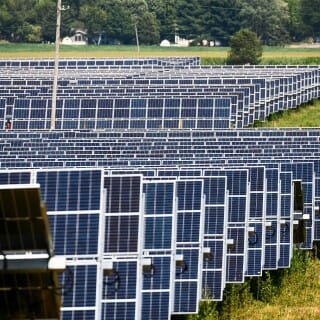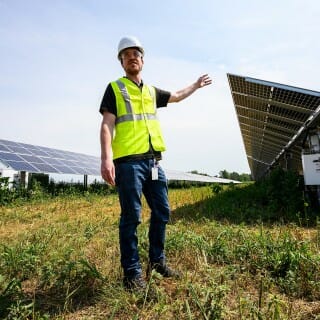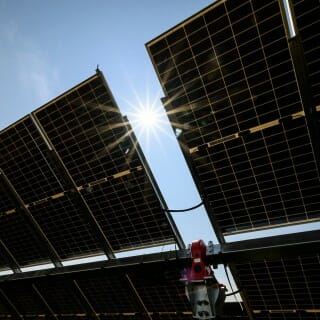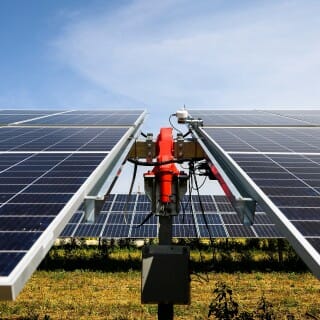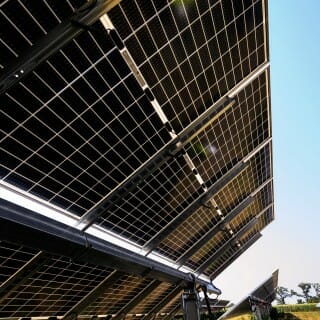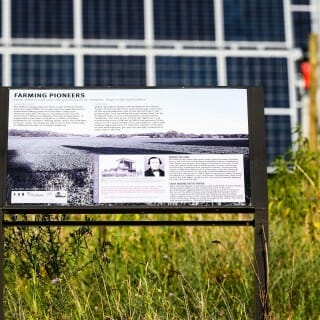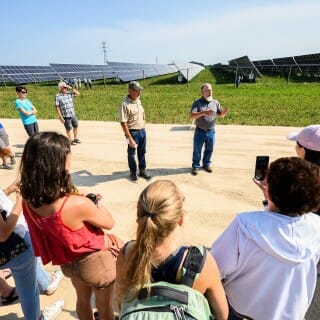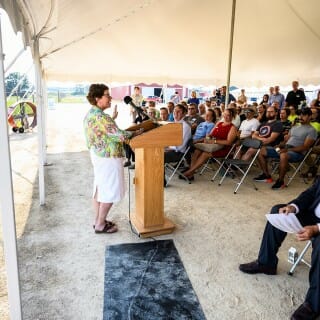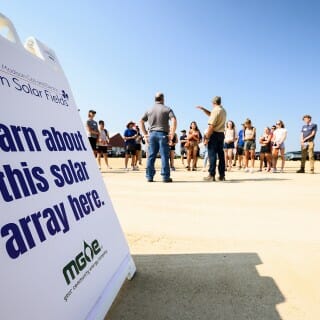Photo gallery New solar field gives UW a sustainable boost
On a long, straight stretch of Seminole Highway in Fitchburg, bikers and drivers encounter an arresting sight: tens of thousands of gleaming solar panels on either side of the road, tilting in unison to follow the sun over the course of the day.
The panels, which provide 20 megawatts of renewable electricity to the local community, are part of O’Brien Solar Fields, a collaborative partnership between the University of Wisconsin–Madison and a range of businesses and agencies that joined forces under the aegis of Madison Gas and Electric’s Renewable Energy Rider.
On July 27, a crowd of stakeholders, energy professionals, university staff and faculty, and students gathered to celebrate O’Brien Solar Fields, which are currently the largest solar installation in Dane County. The 140-acre solar field includes 60,318 bifacial panels.
The gathering represented the Wisconsin Idea in action: the university’s investment in the array and its status as a premier sustainability research enterprise has enabled collaboration with local businesses like Placon, Promega, Willy Street Co-op, and Tribe 9 Foods; municipal and state-level representatives from the City of Fitchburg and the Wisconsin Department of Administration; and farming families like the O’Briens.
The event also was a symbolic hand-off from Badgers to Badgers. Project engineer Josh Cook ’15, who works for EDF Renewables, helped to design the array. John Armstrong ‘12, a project manager at MGE, led a detailed tour during the celebration. And MGE employees Dan Clausen ‘86 and Todd Montevideo (pre-engineering ’84-’86), who were responsible for site and construction management of the project, gave a presentation to a group that included approximately 20 current UW–Madison undergraduates interested in renewable energy.
Speaking at the event, Chancellor Rebecca Blank credited UW-Madison students for making their voices heard about the critical importance of clean energy and climate action on campus.
The O’Brien Solar Fields are slated to provide clean energy for 30 years, and perhaps longer. In that time, they will not only help reduce carbon emissions and adverse health effects from pollution and climate change, but also will provide a space where UW–Madison students can study and learn.
“This will be one of the best local field trip locations our students have ever had,” Blank said.
In the fall of 2021, MGE will sow a seed mixture of native, pollinator-friendly plants and flowers around the panels. Those plants will take approximately three years to become fully established and will be mowed twice a year. They will support biodiversity as well as improve the soil in case it is farmed after the array is decommissioned.
See more photo storiesTags: energy, recent sightings, sustainability

